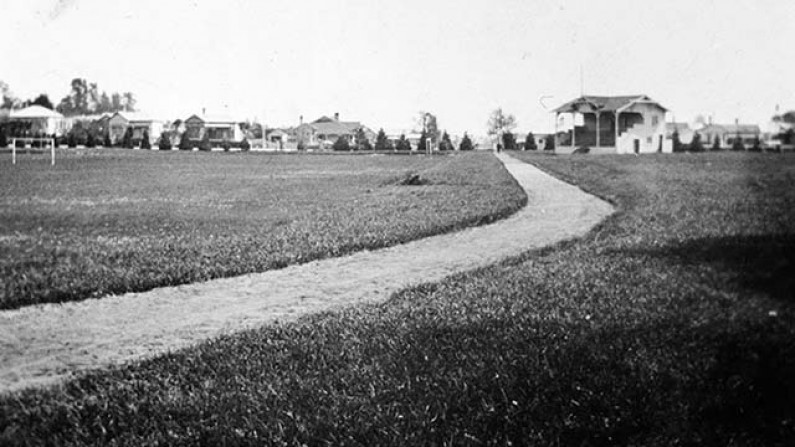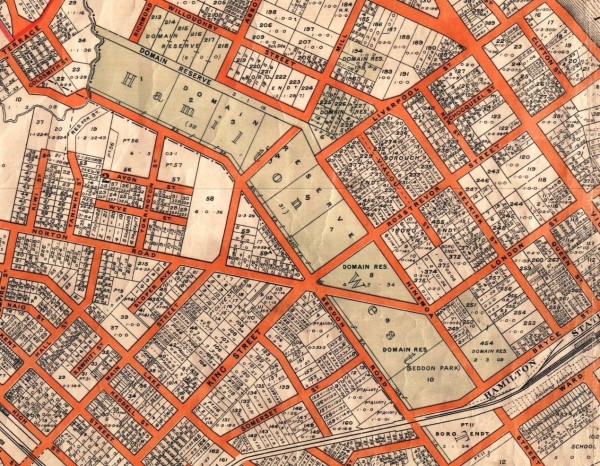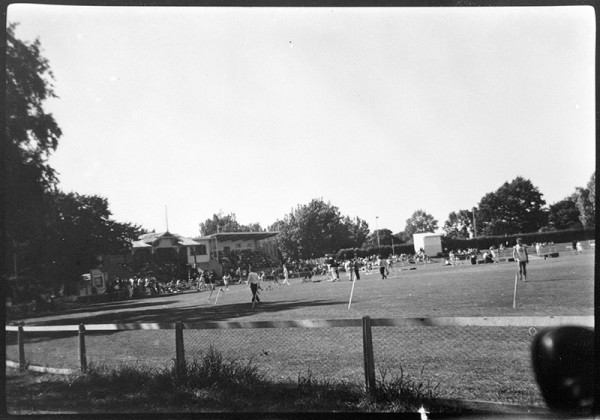Seddon Park: From Paddock to Premier Pitch

Seddon Park is one of Hamilton’s most iconic green spaces and the city’s main cricket venue. Today it hosts international test matches, one-day internationals, and is home to the Northern Districts Cricket team. In 2022, it was also proud to be a host venue for the ICC Women's Cricket World Cup. But before cricket took centre stage, the land had a very different role and name. The area was originally part of Hamilton’s west town belt. Located beside the railway line, it was initially reserved by the Crown for railway purposes. When that use was no longer required, the land was transferred in 1886 to the Hamilton Domain Board, which leased it to a Mr Qualtrough for 14 years. Locals simply called it “Qualtrough’s Paddock.” In the early 1900s, there was public discussion about establishing Hamilton’s saleyards on the site. However, in a vote by residents of Hamilton West, the idea was firmly rejected. Instead, the area took a different path. In July 1906, the park was named in honour of Richard John Seddon, New Zealand’s recently deceased Premier. “Seddon Park” came to describe the area bounded by Norton and Seddon Roads, Tristram (formerly Hinemoa) Street, and the railway line.
Seddon Park became Hamilton’s main cricket ground in 1908, and a wooden pavilion was soon added. However, cricket was far from the only sport played there. Over the years, the park hosted hockey, soccer, rugby, athletics, and even cycling. Beyond sport, Seddon Park was a community hub. It was the site of brass band practices and concerts, school cadet inspections, and even a 1945 address to striking dairy workers, delivered from the park pavilion. Before major redevelopment in the 1950s, Seddon Park featured a multi-level grassed area surrounded by trees. A sealed path cut through the park, used by pedestrians and cyclists travelling between London Street and Seddon Road. Cars could enter from the London Street side, and spectators sat on a grass bank overlooking the playing fields below.
In January 1953, reconstruction began on a major scale. Earthworks reshaped the playing surface, creating a circular ground that could accommodate three cricket pitches (two for local play and one central representative pitch), as well as hockey, soccer, and athletics. The old wooden pavilion was renovated, and a new concrete grandstand was built beside it. Hedges enclosed the playing area, enabling paid entry for major matches. Outside the circle, the park was beautified, and car parking was shifted to the Bryce Street end. A year later, the revitalised Seddon Park hosted its first match: a two-day game between Waikato and Fiji, which Fiji won by 8 wickets. In the same year as the park’s transformation, the Northern Districts Cricket Association was founded, and Seddon Park has been its home ever since.
The ground made its international debut on 15 February 1981, hosting a One Day International (ODI) between New Zealand and India. Ten years later, on 22–26 February 1991, Seddon Park hosted its first Test match, with New Zealand playing Sri Lanka.
From humble paddock to international sports venue, Seddon Park has long been at the heart of Hamilton’s recreational and community life. Whether you’ve played on its turf, watched a match, or attended a community event, we’d love to hear your story.

Excerpt of Hamilton Domain Board Minutes, 13 July 1906, p.330

Excerpt from 1927 Map of Hamilton Borough showing location of Seddon Park


Programme from cricket match between Waikato and Fiji, 1954. HCLE_03499
